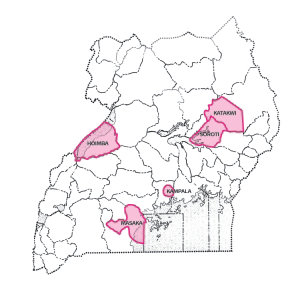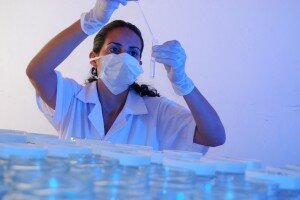By: Amanda Miller
Many of us don’t think about infectious tropical diseases in the United States or Europe – but it was less than a couple hundred years ago that a cholera epidemic spread throughout Europe. One outbreak in September 1854 killed over 500 people in just ten days. A search for the cause and cure was unsuccessful.

Photo taken from http://johnsnow.matrix.msu.edu/
Dr. John Snow then developed a theory of cholera transmission that was contradictory to other accepted beliefs – transmission of cholera was due to drinking water contamination. He mapped cholera cases and found that they had taken place near the infamous Broad Street pump. By providing one of the earliest examples of epidemiological research, Dr. Snow made one of the first known connections between water and disease.
It makes perfect sense to us these days that you can get very sick from contaminated water. It’s the first thing people say when traveling to other countries – “don’t drink the water.” Yet think of a world just a couple hundred years ago where we didn’t quite understand why people were getting sick.
So what’s the big deal? And what does it have to do with NTDs?
Well, we have the ability to think about NTDs through many different lenses. One is through treatment and reducing prevalence. Another is routine preventative chemotherapy through mass drug administration. And yet another is through long-term solutions like water and sanitation. But is one good without the other?

Photo taken by author
We know that poor sanitation and contaminated water contributes to the transmission of NTDs. Of the seven most common NTDs, the transmission of six is directly related to unsafe water, inadequate sanitation and insufficient hygiene.
- Soil-transmitted helminths (ascariasis, trichuriasis and hookworm) occur when fecal waste is ingested via hand- to-mouth behaviors or contact with contaminated soil
- Schistosomiasis is strongly correlated to unsanitary disposal of human waste disposal and lack of access to clean water
- Trachoma is related to lack of face washing, usually due to lack of access to clean water
- Lymphatic Filariasis can be controlled through improved sanitation and waste-water management
This is why water, sanitation, or hygiene (WASH) becomes a key factor in NTD initiatives. Of course, long-term solutions are expensive and complicated. Behavior change is slow, and infrastructure building is even slower. But since we found out 200 years ago that water is inextricably linked to many infectious diseases in developing countries, isn’t it time we focused on the root cause? It all points towards clean water and sanitation.
If Dr. Snow hadn’t pulled the handle off of the Broad Street pump in the middle of a cholera epidemic, how many more people would have died before we figured out what to do?
Amanda Miller is the Asia Program Officer for the Global Network for Neglected Tropical Diseases. Amanda has public health experience in Rwanda and Botswana, and in her free time enjoys knitting.


 The specific remit was to examine issues of ownership, integration, coordination, implementation and impact, with a particular focus on the unique strengths and problems of these access PPPs as distinct from other comparable programs where drugs are competitively procured. Fieldwork visits were made to five districts in Uganda –Hoima, Kampala, Katakwi, Masaka and Soroti – selected on the basis of active implementation of the PPP programs […]
The specific remit was to examine issues of ownership, integration, coordination, implementation and impact, with a particular focus on the unique strengths and problems of these access PPPs as distinct from other comparable programs where drugs are competitively procured. Fieldwork visits were made to five districts in Uganda –Hoima, Kampala, Katakwi, Masaka and Soroti – selected on the basis of active implementation of the PPP programs […]